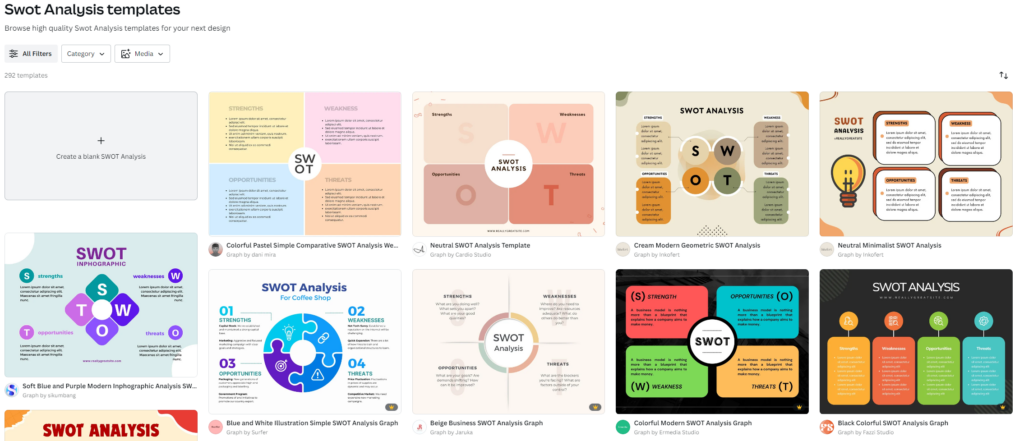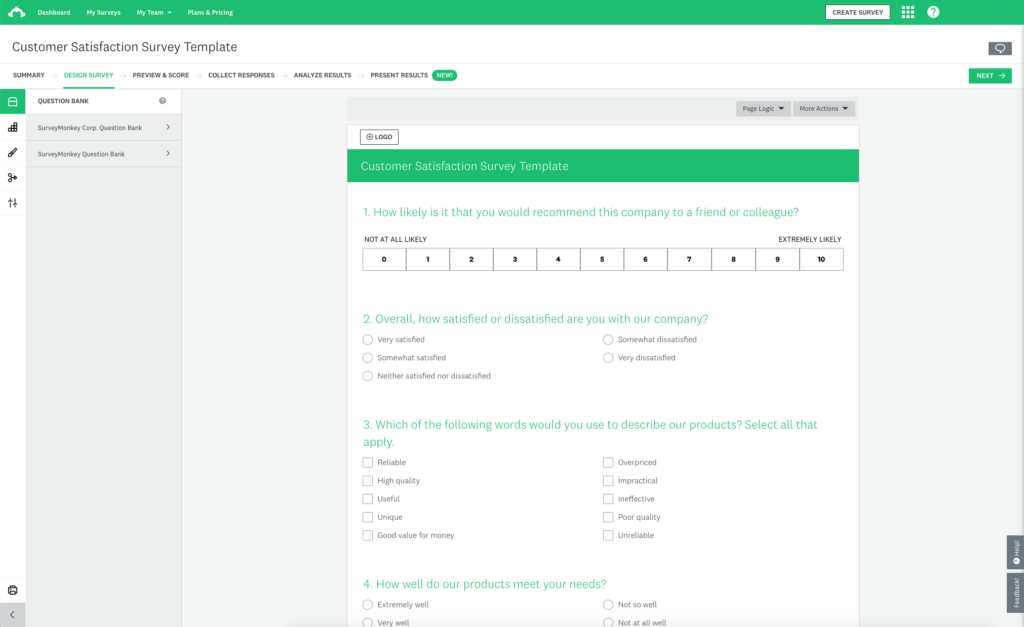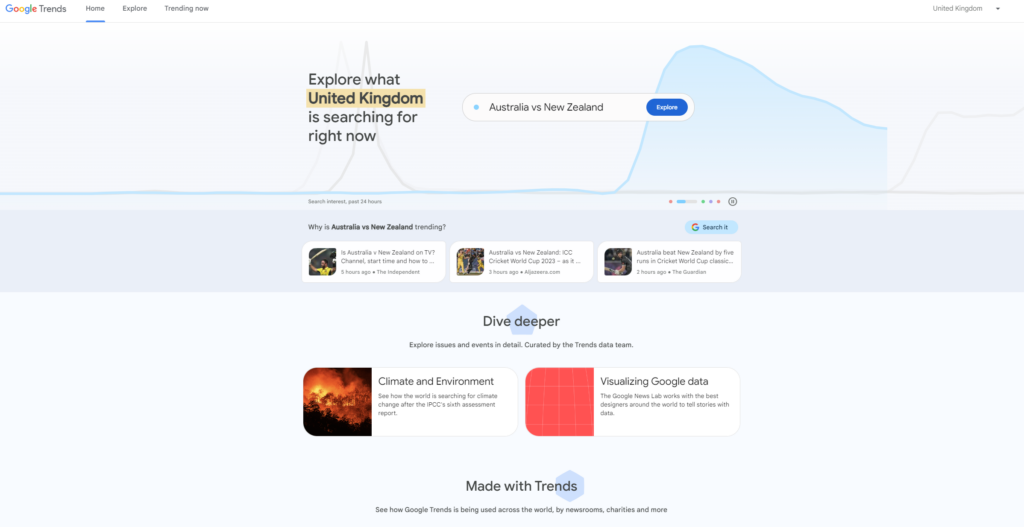want expert advice on your website? get in touch for a free website audit
book your free website audit
What is a Marketing strategy and why does your business need one?
A marketing strategy is your road map when it comes to your marketing. It aims to provide your business with a sense of direction on how to tackle your marketing. It’s the driving force that will help get your product, service, or business, in front of the eyes of your customers. An effective strategy is usually comprised of three key elements: your business, your target audience, and your competitors.
While a marketing strategy may not seem necessary, I can tell you it very much is. Without a game plan in place, you’re going to lose sight of your business goals, and eventually make it very hard for your business to achieve them. You’ll end up creating marketing materials that you think are going to work but completely miss the mark. Your marketing will not pack a punch, and you’re essentially back to square one.
Not only does a marketing strategy help you get back on track with your marketing, but it also makes sure you’re allocating your time and resources to things that work. Thanks to the internet and the power of social media, there are many marketing channels out there. However, with limited resources by your side, it is not likely you’re going to be using all of them effectively. With a strategy, you’re able to find out what works for your business and understand areas where you may want to invest a little bit more. This in turn will make sure you’re getting the most return on investment.
It also makes sure your marketing makes sense to potential customers. Without a strategy, many businesses run into the problem of inconsistencies within their marketing channels. A marketing road map helps you tackle those inconsistencies head-on and helps you create a sense of uniformity between your marketing channels. This way, your marketing puzzle will start to piece itself.
What you need to do before creating a marketing strategy:
- Understand your business: I know what you must be thinking. ‘It’s my business, no one knows it better than I do’. While yes, no one knows your business more than you own self, you need to understand yourself from a marketing point of view. This includes your goals, mission, vision, product, and it’s unique selling point (USP). This will help you figure out ways to approach your marketing at the different tactics you can use that are in line with your business.
- Target audience: Identifying your target audience is one of the most important things you do during this process. Your target audience practically lays the foundation for everything you do within your business and your marketing strategy is no exception. Yes, they have major main character syndrome, but that’s what makes them so important. You’ll need to have a thorough understanding of your audience’s needs, behaviour, preferences, etc. The better you know your audience, the more your marketing strategy will resonate with them. Taking on a customer-centric approach will help your audience feel seen and heard. A good example of a company taking on a customer-centric view on marketing is Amazon. Amazon is obsessed with improving its customer satisfaction which has been a crucial part of its marketing strategy. From speedy shipping to a high-quality user experience, the company has proven to care about their customers.
- SWOT analysis: A SWOT (strengths, weaknesses, opportunities, threats) analysis is a powerful tool to use to figure out what your business is already good at and what it needs to work on in terms of your marketing efforts. It also gives you an idea of opportunities you may want to capitalise on. Whether it’s a seasonal promotion or an industry change, it’ll make sure you’re staying ahead of the curve. Threats are a good way to anticipate what’s to come so that your business can be prepared for any hits you may face. Canva has some great SWOT analysis templates you can use to make sure you stick to your branding.

How to create an effective marketing strategy:
1. Set clear goals:
Let’s start our marketing game plan with goals that are as clear as crystal and achievable as finding the latest viral TikTok trends. However, we’re not just setting any goals. We’re setting SMART goals – Specific, Measurable, Achievable, Relevant, and Time-specific. By setting SMART goals, you create objectives that not only guide your strategy but also give you a sense of motivation to help reach your goals. It also can be used to evaluate the success of your campaigns and see what works and what doesn’t.
When putting together your key objectives, don’t overload your page with tonnes of different goals. That’ll just be confusing and isn’t ideal for measuring your success. Instead, I recommend sticking to about 4-7 key objectives that you revisit regularly. This will make sure they’re always on your mind, and you can also tick them off once you’ve completed them! Re-evaluate them every 6 months, so that you can see whether you’re on track or if you need to make any changes to them.
2. Market Research and Competitive Analysis:
Now that we have some goals to work towards, let’s go on doing some market research. You want to dig deep here and find the ins and outs of your target audience and your competitors. This will help you figure out how to identify gaps in the market where you can fill those gaps.
There are a couple of ways you can find out more about your target audience:
- Ask them!: If you want to find out something specific about your audience, simply ask them. Conduct a survey consisting of all the questions you need answers to and send away. Don’t make it too long as the last thing we want is 2 responses for a survey you sent out to 1000 people. Tools like SurveyMonkey are great for this as you can send out surveys that land directly in your customer’s inbox.

- Find out what people are searching for: Want to know what’s the most trending topics surrounding your industry amongst users? Google Trends is a free tool which tracks the popularity of Google searches over some time. While it doesn’t provide an exact figure on what the search volume is for each topic, it’s a great tool when starting.

- Use your website’s analytics: Your website’s users can tell you a lot about your key demographic. While they may not always be the ones to purchase your product, their clicking on your website indicates some sort of interest towards your business, service, or product. Don’t believe me? As a dessert addict, you’ll never find me on a healthy eating site. Instead, you’ll see me scrolling through a blog about ‘trending desserts you need to try’. Set up Google Analytics for your website and after a couple of weeks you’ll be able to get a clear picture of the age, location, and even interests.
A big part of your marketing strategy is to gain an advantage over your competitors. This is why you need to figure out how to gain a competitive advantage that’ll help you stand out.
Let’s do some good old stalking. A quick Google search can help you find out a lot about what your competitors are up to in terms of their marketing. You’ll get to see what marketing channels they use, their tone of voice, how they utilise these marketing channels, and much much more. You can then gather what you find and then ask yourself ‘How can I do this better?’.
Apple’s product differentiation within the industry is a great example of ‘anything you can do, I can do better’ Their ‘Think Different’ campaigns place emphasis on their unique designs and highlight what sets them apart within the tech industry. While I’m not saying by being different you can be the next Apple, what I am saying is that standing out can help create an impact within your niche.
3. Choose the Right Marketing Channels:
Now that you know your target audience and your competitors inside out, it’s now time to choose the right marketing channels. Let’s start with identifying what each marketing channel is for:
- Instagram: Social media tool where pictures and videos come first, and captions come second. Great for any age group, however extremely popular within Gen Z and Millennial age groups.
- Facebook: Social media tool with a lot more interest in personalisation and personality. Popular within the 27-40 age group.
- TikTok: Everyone’s favourite social media platform – TikTok. Thanks to the algorithm, it’s perfect for any age group, with any interests.
- LinkedIn: LinkedIn is the number one B2B social media tool out there. The platform allows you to quickly connect and start talking to business professionals who may be interested in your product or service.
- Blogging: Content marketing and SEO tool designed to get people on your site based on the content you put out relating to your industry, product, or service. Ideal for any demographic- your content just needs to be interesting, creative, and SEO-focused.
- Email Marketing: Perfect for weekly newsletters, special promotions, and the latest updates about your brand. The key here is to create a database full of contact details from existing customers and potential customers who have signed up for your email list.
- Paid Advertising: Google Ads, Facebook Ad – for when you want to reach your specific target market quickly and easily. (Please note: Don’t use paid advertising as a short-term solution for a long-term problem. It will not work and is not sustainable at all).
- Offline Advertising: For those companies who want their business to be known in the real world. Billboards, Sponsored Events, Printed Ads, etc.
Now that I’ve gone through the different types of marketing channels you may consider, you want to select the channels that are right for you. This is all based on your target audience and evaluating the best methods for getting your marketing efforts in front of the eyes of your demographic.
There is no one-size-fits-all approach to marketing. You can’t just use one marketing channel and expect it to get you heaps of customers. Find the ones that are most appropriate to your target audience and objectives. Using a couple of marketing channels will ensure your business is fresh in the minds of potential customers.
It’s like the dating rule:
- The first date is all about first impressions.
- The second date is all about getting to know the other person.
- Third date you’re flirting more, getting much more comfortable.
- The fourth date is usually when you and the other person make it official, and you come home smiling like a kid on Christmas.
Now start viewing your marketing this way and you got yourself a killer recipe for success.
Remember: Marketing is all about communicating, and if you’re not speaking the same language as your audience, they’re not going to understand or care about what you have to say.
4. Get Creative:
Here comes the fun part. The next step is to get creative. As I mentioned previously, you need to stand out. And what better way to stand out than to let your imagination run wild? Start brainstorming some ideas for creative campaigns that your competitors haven’t even thought about doing. This will help you not only stand out but make sure you’re creating something unique.
Look for inspiration everywhere around you and look at creative campaigns that brands in different niches and industries are doing. Use their concepts and make them your own. While others may call it stealing, I like to refer to it as simply borrowing.
Storytelling goes a long way in the world of marketing. Craft compelling stories around your business, product or service. The best part about storytelling is that it’s entirely unique to you. This will also help to add a sense of personality to your brand, making it seem more relatable and authentic.
5. Budget:
It’s okay to dream big with your marketing. But if your marketing strategy isn’t backed by a big budget, it can be almost impossible to reach your goals. This is why it is important to allocate a reasonable budget to your goals based on the resources you have available as well as the goals you made during the starting stages of your strategy creation. You must have a budget in place so you can track and manage your expenses as well as see your return on investment when it comes to reviewing your strategy at the end of the year. It will also help you make much more informed decisions on what aspects of the marketing you allocate your budget to.
6. It’s show time – The execution of your strategy:
With the strategy nearly complete, it is now time to put the plan into action. This is where the magic truly happens, and having a well-defined action plan will help you with the execution process. This plan ensures you’re being aware of your goals and objectives at each step of the process.
Timing is everything. Set a timeline and make sure to follow it religiously. Whether it’s sending out an email campaign, scheduling your social media posts, or creating Google Ads for your new product launch, your timing needs to be on point so that your strategy is successful.
Most importantly, you need to stay committed to your game plan. Consistency is key to building trust and recognition and turning your audience into a loyal community. Make sure you’re constantly referring back to your plan in case you need to adapt, refine, or optimise your strategy based on industry changes. Stay updated with industry trends so that you can use this to your advantage of emerging opportunities. The world of marketing is also extremely dynamic so make sure you’re aware of the different of the latest marketing trends so that your company has a good chance to compete with those who are always one step ahead.
7. Reporting and Analysing:
Once you’ve made a start on implementing your marketing strategy, you should start to see results pouring in. The time frame on when you see results will vary from business to business and can be anywhere from 3 weeks to 6 months.
Using the reports from your marketing campaigns can be a great way to track your key performance indicators (KPIs) as well as the metrics. These metrics help you to understand the success of each campaign as well as understand what you can do better for your next campaigns.
By comparing your results to industry benchmarks and competitors, you gain an insight into where you stand in the market and can find opportunities for improvement.
If the results show that you’ve outgrown your marketing roadmap, it is now time to repeat this very process and create a new one that’ll match your newly found growth.
